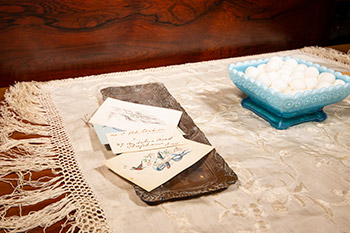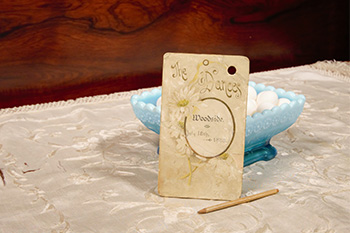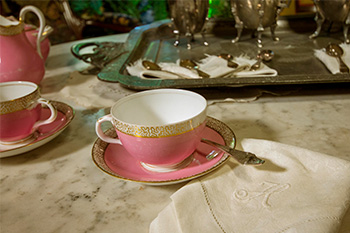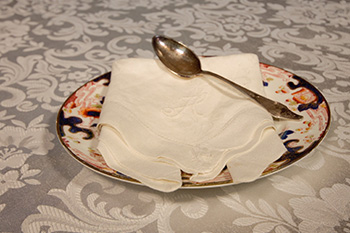SET UP THE MOST FABULOUS BLACK AND WHITE PARTY EVER !!!There are all types of themes for gatherings and celebrations, one of them being a "black and white" party. If you've ever been invited to one of these types of events, you might wonder what it means and what attire is appropriate. It's typically elegant yet understated, with all of the guests dressed in their finest black and white attire.
A black and white affair is typically a more formal event, so an evening gown or a formal suit would be in order. Look for other hints on the invitation, such as "tie optional." Parties after dark are usually more formal than those that begin in the afternoon. If you are unsure, contact the host and ask whether it's formal or semi-formal. You're probably not the only person who isn't sure how to dress, and it's always good to have confirmation from the source.
The black and white evening party is a way to have a glamorous event with everyone dressing up in outfits that cast an ethereal glow. No one will clash with anyone, and the guests will put all of their creative energy into style rather than splashes of color.
There are times when a black and white event might not be formal. If it's for a child or teenager's party, chances are it's not.
How to Dress for a Black and White Party
Honor the black and white theme by wearing what the invitation states. It would be disrespectful to show up in a purple ensemble, and the host might remove you from the next party's guest list.
Don't wear any color other than black or white. This includes handbags, shoes, and jewelry.
You should stick to the classic diamond and pearl jewelry that are perfect for a black and white event. If you don't have real pearls and diamonds, you can wear faux jewelry. With the lights down low, most people won't have any idea they're not the real thing, as long as the pieces are not too large.
Men should pay close attention to the wording such as "black tie optional," which means that they may wear tuxedos, but it isn't essential. If they don't have the means to purchase or rent a tux, a black suit is appropriate.
Women should select attire from more sophisticated and glamorous materials, such as silk or satin. Cotton and cotton blends are better put aside for a garden party. Beading and rhinestone embellishment provide all the glitter a woman needs, as long as it doesn't overwhelm the dress.
Evening gown styling should flatter the woman's best feature. Black and white are both such dramatic colors that they can enhance or overwhelm the person wearing them. Decide what you'd like to emphasize and select a dress that shows it off. For example, if you have beautiful shoulders, you may want to wear a strapless or off-shoulder gown. If your legs are your best feature, raise the neckline and show off some leg with a slit up the side. Keep the look elegant to fit in with the theme of the party.
black and white tie party decor
********************BLACK AND WHITE LINENS AND CHAIR COVERS AND MORE***
********** *********TABLE TOP DECOR*black and white table top decor****************
How hard was it to plan a Victorian tea party?
The Victorian Era was characterized by elaborate rules of etiquette for almost every element of public life. How would Mrs. King navigate these rules to plan a Christmas time high tea? We’ll be working through the planning process for a high tea during the Victorian era, addressing different rules that would have influenced Mrs. King’s plans.
What was a tea party?
For upper class Victorians, afternoon tea was light meal served between lunch, at noon, and supper, at 8 pm. When you hosted an afternoon tea, it would include sweet treats like cookies, candies and cakes, as well as sandwiches, fruits and nuts.
Compared to a dinner party, a high tea was less formal and easier to manage. At a tea, all of the food could be laid out on the table at the same time, rather than serving courses. Also, you could accommodate more guests at a high tea than a dinner. Hosting a tea was still work, and there are plenty of decisions about décor, menu, and activities to be made, and the duties of a hostess on the day.
Who would you invite to afternoon tea?

It depends on what you were holding the tea for. A high tea was, above all, a social gathering. A tea could be as small as a few friends visiting for an afternoon, or inviting everyone in your social circle. During the busy holiday season, one large afternoon tea could be a chance to fulfill all of one’s social obligations in one afternoon. Mrs. King was a renowned hostess in Berlin, so it would not be surprising if she invited her entire social circle to one big holiday tea!
How to deliver invitations to a tea party was at the hostess’s discretion. An invitation could be as simple as a letting our friends know about the event, or sending written invitations. Some hostesses would write the time and date of the tea on the back of her calling card and leave it while out calling on her friends.
The Food
TEA PARTY FOOD TRAYS
Despite its name, the food is what a tea party is best known for. Dishes at afternoon tea were meant to be dainty and easy to eat with your fingers. It was common to see savory sandwiches and sweet treats like cakes and candies. Some cookbooks from the era suggest serving shrimp or anchovy sandwiches and stress the use of only the finest ingredients, to help you impress your guests. Picking what to serve would come down to what was available, and what a hostess, or a servant, could prepare.
During the holidays, you would find a variety of holiday dishes served with the usual tea fare. Mrs. King likely would have furnished her table with a mix of Scottish and German goodies, reflecting the family’s Scottish heritage and the German community in Berlin (now Kitchener).
Bread and butter or cucumber sandwiches were a staple of afternoon tea, but not because of their flavour. These sandwiches were a sign of high status! Both sandwiches have little nutritional value, so eating them was a sign you likely did not make a living using your hands – you might have been a professional like a doctor or a lawyer, rather than a farmer or labourer.
Activities

Aside from eating and drinking, there was often some sort of activity or game at a tea party. The activities could vary. One publication from the era reports a tea party where the hostess had her guests draw caricatures of any three guests present. The best portraits were awarded small prizes, and the artist who produced the worst one was given an eraser.
Dancing was common at tea parties. We know that the King’s drawing room could be arranged for dancing, so it’s likely that Mrs. King would have had dance cards ready at a tea!
Setting the Table.......TABLE SETTING

Setting a beautiful table was essential when hosting a tea. Victorians put a lot of emphasis on hospitality and showing off your wealth – even if you weren’t rich. When hosting a party, a Victorian would want to use their best china and serving dishes to impress their guests. It was not uncommon to see a table furnished with a mix of china from different sets; this was so a hostess could show off that she owned multiple sets of china, not just one.
Many periodicals from the period emphasise that table cloths, napkins and tea cloths (tea towels) should be tasteful, and accent the china. Periodicals also suggest placing a large piece of felt or flannel between the table and the cloth, to add some volume and get “the best effect in draping”. This trick is recommended when using cheaper table cloths, to make them look more expensive.
What would a lady wear to a tea party?
As the host, you wanted to show off the best of what you owned, including your clothing! In the late 1800’s, tea gowns were incredibly popular. One periodical said “the most fashionable’ … ‘dress for reception is a tea-gown.” A tea gown was a lighter, free fitting dress that was not as formal as a dinner gown, but was formal enough to wear with company. The gowns had the added benefit of being looser, meaning that a lady did not necessarily need to wear a corset. However, tea gowns could still be very elaborate and expensive. A hostess might prefer to wear a dress or skirt and blouse that was more tailored and fitted, which was still a fashionable silhouette in 1891.
A guest would also want to wear their best clothing when out visiting. Much like their hosts, a guest would want to give off the appearance of wealth. A large tea party might be a good opportunity to show off a new dress or hat.
What about a gentleman?
Much like today, men’s clothing was less elaborate than women’s. Unless it was a very formal tea, a gentleman would sport a sack suit. The sack suit was a predecessor of the modern three-piece suit. These suits were often ready-made, and available in a variety of patterns. Men could use neckties and vests to add some colour.
Shirt collars were often removable. This made them easier to wash and could be starched separately from a shirt. They could also be thrown out when they became worn out. Removable collars helped shirts to last for years.
How to properly drink a cup of tea
Etiquette guides advise that:

- One should hold the teacup using the thumb and your first one or two fingers. Sticking out your pinky is not needed.
- When seated, if you are not drinking your tea, place your cup on the saucer. If standing, you may hold on to the saucer. You should not hold the bottom of your cup in your hand.
- You should look into your tea cup when drinking, never over it.
- Do not tap your spoon against the side of the cup when stirring. When not in use, your spoon should rest at a 15-degree angle on the saucer, behind the tea cup and to the right of the handle.
- You should never drink your tea with the spoon in the cup.
There is some debate over when to add milk to tea. Traditionally, one would put milk in the cup before the tea to prevent the glaze on teacups from cracking. However, this is not an issue with modern tea cups.
Etiquette for eating
Just like there are rules for drinking tea, there is also etiquette for eating. Etiquette guides advise that:

- You should unfold your napkin and place it on your lap. If you leave your seat, place the napkin on your chair. Never wipe or blot your face with a cloth napkin, particularly if wearing lipstick. Lipstick may stain a napkin.
- Foods should be eaten with small bites. Tea is a social occasion, and you will want to participate in conversation.
- It is fine to use your fingers, but forks should be used for messier foods. Lady should remove gloves before eating.
- Some foods, such as scones, have their own rules for eating. Scones should be split with a knife. Once that knife has been used, it should be set on a knife rest and on the side of your plate. As scones are normally served with jam or curds and clotted cream, use the serving spoon to place the topping onto your plate. Use your spoon to spread the jam or curd and cream onto your scone; never use the serving spoon.
What would a hostess do during a tea party?
While customs varied, one of the main duties was greeting her guests as they arrived. Usually, a hostess would meet her guests at the door. She would shake hands with every guest as they enter, and exchange greetings. If the tea was being hosted in someone’s honour, the guest of honour would stand with the hostess so she could introduce them to her other guests.
Additionally, a hostess would want to make sure all of her guests are comfortable. While it is unlikely the hostess would serve tea herself, she would ensure that beverages and food were available and refreshed as needed.
Finally, she would also run any activities or games that she had planned and socialize! That’s the whole point of hosting a tea. A hostess would want the chance to catch up with her friends, and hear the latest news.








No comments:
Post a Comment